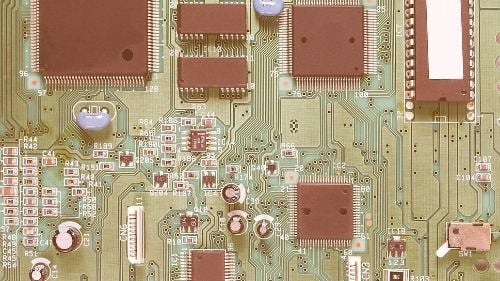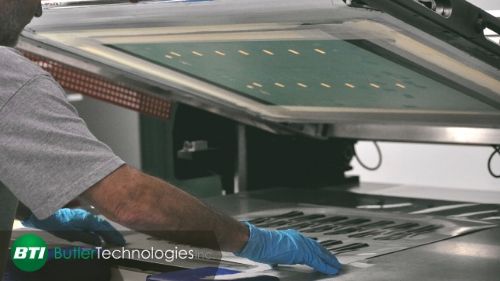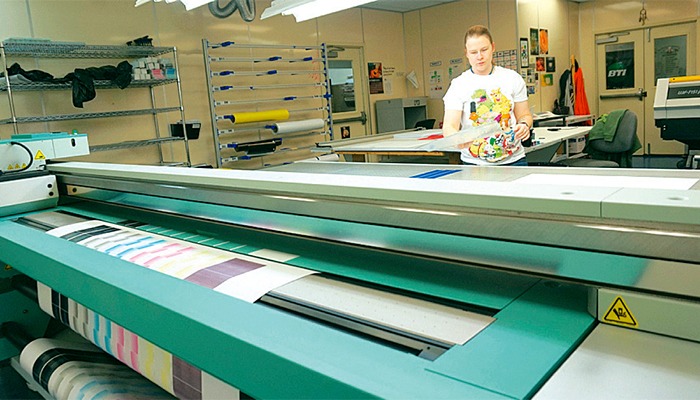Remember Moore’s Law? Basically, it’s a proven theory that technology can double its smarts while getting cheaper. Printed electronics is a perfect example of how technology is continuously evolving. Why are printed electronics the key to innovating technology? Let’s start with the basics.
What are Printed Electronics?
Printed electronics could be defined as any electronic component that can be manufactured through a precision printing process. Usually, printed electronics can be referred to as PE. Butler Technologies, Inc. is a custom manufacturer of a variety of PE. Types of printed electronic products include wearables, flexible heaters, biometric sensors, force sensing resistors, flexible circuits, antennas, and capacitive touch interfaces.
Wearables are a relatively new printed electronics market that benefits significantly from innovative technology design that includes printed conductive pieces. Electronic textiles can contain biosensors, flex heaters, and force-sensing resistors.
Products can also be flexible circuitry or a flexible hybrid, which combines the functionality of rigid substrates with the form factor of precision screen printed flexible circuits on polymer thick film (PTF). Both flexible and rigid printed antennas are used in energy harvesting, wireless power, and data transmission applications.
Traditional human machine interfaces that include bulky switches can be swapped out with a capacitive touch interface. In-mold electronics is the combination of traditional in-mold design with functional printed electronics.

Who is Credited with Discovering Printed Electronics?
According to the US National Library of Medicine, the first printed electronics patent was developed by Albert Hanson in 1903. The patent was for a design of printed wires for a telephone system.
Albert was one of the inventors that inspired the design of today’s modern circuit board. Instead of inks, he used parts of metallic and conductive foil that were attached to wires sealed to a sheet of specific paraffin paper.
How are Printed Electronics Made?
PE is made using a precise printing process. The most common way to print electrical components is through screen printing. Top-of-the-line screen printers allow for the tiniest traces of ink to be printed onto substrates.
Inks designed by industry leaders are conductive and allow for electricity to move through the traces of ink. There are a wide variety of materials that the inks can be printed onto.
Ink traces can also be printed onto film to get thermoformed or molded into the product design.

Where to Use Printed Electronics?
PE has the potential to be used in almost every industry. The industrial controls market is transitioning from membrane switches to printed capacitive touch interfaces.
Force sensing resistors are popular in the sports industry, as they have the ability to measure how hard a runner hits the ground. The home health market is growing thanks to the creation of wearable biometric sensors.
Logistics and inventory managers are beginning to utilize printed antennas within their products to wirelessly track inventory, which is especially helpful when they’re out of the office.
A custom flexible heater can be added to any part of clothing to keep consumers warm all year round, such as jackets, boots, gloves, and socks.
The top athletes use wearable biometric sensors to track muscle symmetric while training. Sports trainers and coaches use wearable sensors as a way to track exactly how hard their player is working to prevent injury.
What are the Best Features of Printed Electronics?
Printed electronics can be flexible. A combination of different inks and materials allows for the design to flex, bend, and stretch with the user.
Printed electronics can be washable. Specialty inks are specifically created for wearables. Luckily for many of our sweaty athletes, the tech can be washed and reused up to 100 times.

Printed electronics are wireless. This innovative technology uses software and smartphone apps to gather user data. Heart rate sensors eliminate the possibility of being stuck to a heart monitor.
Printed electronics can be custom designed to withstand harsh environments. Many of the materials used in printed electronics can withstand freezing and extreme outdoor temperatures. Other materials that are a part of medical devices are able to withstand the constant cleaning with harsh materials. PE can be custom made for durability and will be able to last even in safety and defense situations.
Bulter Technologies is the Go-To Manufacturer of Printed Electronics
BTI
understands the need for reliability and durability. All of the products designed with BTI go through rigorous tests to ensure product functionality. We partner with the industry leaders of inks and materials to guarantee the highest quality. Contact us when you have an idea for custom printed electronics.
Meet the Author

Ashley Foster previously worked on the BTI Team as an Integrated Marketing Specialist.